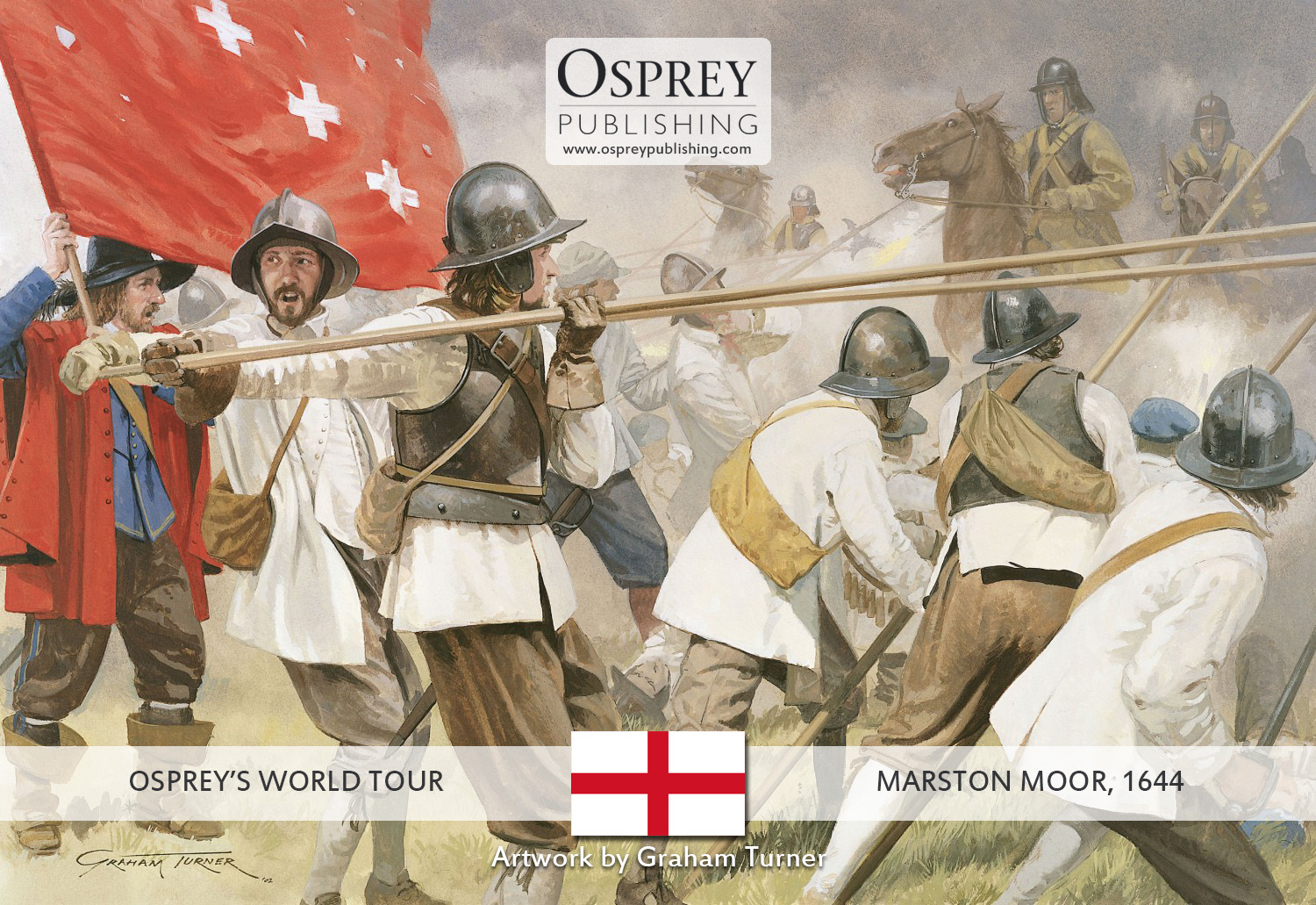Osprey are going on tour! Not literally (unfortunately), but through our extensive backlist of books we can go on an historical trip around the globe. Today marks the first instalment, starting with a look at a battle from England's past. The scene below comes from Campaign 119: Marston Moor 1644 and shows Newcastle's Whitecoats standing against Cromwell's Ironsides.
Click here for more military artwork by Graham Turner
The defiant last stand of Newcastle's Whitecoats
Extract taken from Campaign 119: Marston Moor 1644 by John Tincey
Abandoned by their cavalry, the infantry of the Royalist army found themselves isolated in the midst of the wide-open space of Marston Moor. Many turned and fled, some threw down their weapons and pleaded that they were not truly Royalists but had been forcibly pressed into the service of the King. A brigade of green-coated Irish veterans were charged down and routed by Scots cavalry, but amidst the confusion many of the white-coated soldiers of Newcastle’s Foot remained with their Colours. As the Royalist army broke up into a fleeing rabble, the Whitecoats fell back in good order to the ditched animal enclosure of White Syke Close, defiantly peppering their pursuers with musket shot.
The Duchess of Newcastle, in her account of her husband’s life, says that the Whitecoats ‘showed such an extraordinary valour and courage in that action, that they were killed in rank and file.’ Colonel James Somerville says of the Whitecoats ‘when all their ammunition was spent, having refused quarters, every man fell in the same order and rank whereon he had fought’. However Somerville had long since departed the field in the company of the Earl of Leven in his flight to Leeds.William Lilley recorded the account of one Captain Camby who claimed to be the third or fourth horseman to break in amongst the Whitecoats and says that he had never before encountered ‘such resolute brave fellows, or whom he pitied so much’. It must be said that Camby was an actor and may have enhanced his own role in events.
The last stand of Newcastle’s Foot can have involved only a proportion of the men he brought to the battle that day. John Barratt has suggested that it may have been Newcastle’s own Regiment of Foot that formed the defiant rearguard and a possible design of one of their standards is depicted here. Raised in 1642, many men of the regiment were veterans of the hard fighting at Piercebridge that year and Wakefield and Adwalton Moor in 1643. Newcastle’s men had refused to surrender at Wakefield when the town had fallen to the Parliamentarian forces of Sir Thomas Fairfax and they had fought a bloody battle at push of pike at Adwalton Moor, charging against a force mainly of musketeers. The Whitecoats would have formed with their musketeers firing and loading, crouching beneath the protection of pikemen holding their pikes at the ‘charge’ and at ‘charge for horse’. This gallant stand gave many of their comrades the chance to reach York in safety, but their resistance could not endure against the fire of Scots Dragoons and the swords of Cromwell’s Ironsides and it is said that only 30 survived to be taken prisoner.
Further Reading
Want more English military history? These books could be just for you!
Fortress 86: English Castles 1200-1300
Warrior 58: English Medieval Knight 1300-1400
Men-at-Arms 154: Arthur and the Anglo-Saxon Wars
Campaign 169: Somme 1 July 1916
General Military: The Regiment: 15 Years in the SAS
Which English battles stand out most for you? Are there any you feel that Osprey are missing? Let us know in the comments section!


Comments
You must be logged in to comment on this post. Click here to log in.
Submit your comment